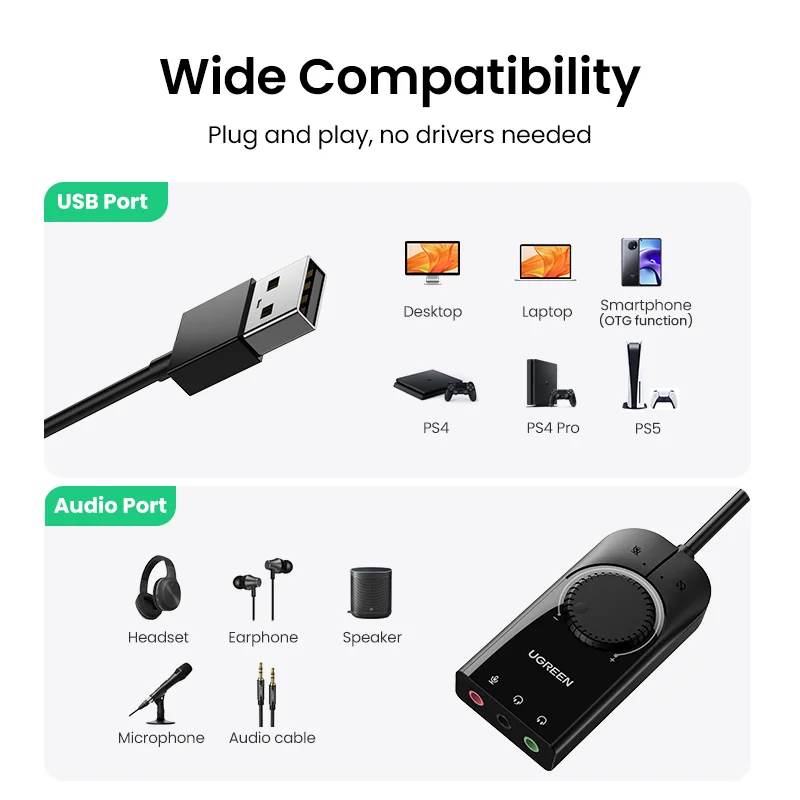

- #External usb audio interface how to
- #External usb audio interface software
Companies including Focusrite, Audient, PreSonus, SSL, Behringer, and others make excellent, modestly-priced units.īehringer U-Phoria UM2 ($45) – provides one mic and one instrument input along with volume control for headphones and one pair of speakers. These low-cost models typically provide only one or two inputs and support only one pair of monitors and headphones. These interfaces provide the basic features with excellent sonic qualities. The UAD Apollo Twin (L) and the SSL2+ (R) interfaces provide a wide range of features, including onboard DSP for plugins, headphone outputs for the engineer and artist, excellent mic preamps, and MIDI connections
Do I need other features, like MIDI, digital connections, or reamping outputs?. Will I want to expand to more mic/instrument inputs in the near future?. Do I want to record at high sample rates (96kHz or above)?. Do I want onboard DSP for plugins, like those from UAD or Antelope Audio?. Do I need separate headphone feeds and talkback for an artist in another room?. Do I need to control volume for headphones and speakers (or more than one pair of speakers)?Īfter you’ve answered these basic questions, here are a few more advanced questions to think about:. How many mics will I want to use at one time?. What kind of connection does my computer provide (USB, Thunderbolt, Ethernet)?. Here is a list of questions to ask yourself when deciding which interface is right for you: Interfaces provide volume control for at least one pair of speakers and some provide multiple headphone and speaker outputs. Most interfaces provide inputs for guitar/bass/keyboards as well as mics. The headphone output in a USB interface will sound better and louder than the headphone out of a USB mic or laptop ‘phone jack. You can use more than one microphone at a time (USB mics allow only one mic to connect). The advantages of an audio interface are these: If you monitor on speakers or wish to use XLR microphones, then it might be time to explore purchasing a dedicated audio interface. If you use only one microphone and a USB mic works for you (see our blog post about microphones), then you may not need an audio interface. Mic, instrument, and headphone connections are on the front panel (left image) while the USB and speaker connections are on the rear (right image). Interfaces range in price from well under $100 to several thousand dollars, and even the most affordable interfaces sound great and provide the basic features.įocusrite Scarlett 2i2 interface. Interfaces typically connect to your computer via USB cables, though some use Thunderbolt, Firewire, or even ethernet. The interface also routes audio from your computer out to your headphones and studio monitors. #External usb audio interface software
Let’s take a look at your options.Īudio interfaces convert microphone and instrument signals into a format your computer and software recognize.
#External usb audio interface how to
One of the first decisions you’ll come to when getting started in music production is how to get sound into and out of your computer. The right gear can inspire you, speed up your work, and even guarantee what you hear is what everyone else hears. You shouldn’t let technology get in the way of your creativity, but at some point a certain amount of tech is necessary. The author Adam Kagan is an instructor in the Audio Engineering program, and in this blog, he gives guidance on audio interfaces and why they are important to have as a musician. The following blog was produced by Sonarworks in collaboration with MI.





 0 kommentar(er)
0 kommentar(er)
